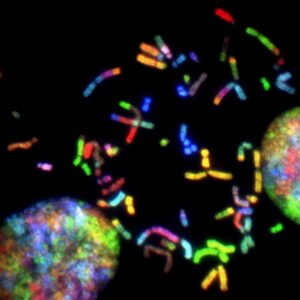Leber Congenital Amaurosis
What is Leber Congenital Amaurosis (LCA)?
Leber congenital amaurosis (LCA) is an eye disorder that primarily affects the retina, which is the specialized tissue at the back of the eye that detects light and color. People with this disorder typically have severe visual impairment beginning in infancy. The visual impairment tends to be stable, although it may worsen very slowly over time.
What are the symptoms of Leber Congenital Amaurosis (LCA)?
A decrease in visual responsiveness at birth is the first sign of the disease. Often the child will poke, press, and rub the eyes to stimulate the retina to produce light (Franceschetti’s oculo-digital sign).This activity may cause the eyes to become sunken or deep set (enophthalmos).
Other symptoms may include:
- Strabismus – a disorder in which the eyes don’t look in exactly the same direction at the same time
- Nystagmus – a vision condition in which the eyes make repetitive, uncontrolled movements
- Photophobia – infection or inflammation that can irritate the eyes
- Cataracts – clouding of the normally clear lens of the eye
- Keratoconus – a progressive eye disease in which the normally round cornea thins and begins to bulge into a cone-like shape
In addition, some infants may exhibit hearing loss, intellectual disability, and/or developmental delay.
What causes Leber Congenital Amaurosis (LCA)?
LCA can result from mutations in at least 14 genes, all of which are necessary for normal vision. These genes play a variety of roles in the development and function of the retina.
Mutations in any of the genes associated with Leber congenital amaurosis disrupt the development and function of the retina, resulting in early vision loss. Mutations in the CEP290, CRB1, GUCY2D, and RPE65 genes are the most common causes of the disorder, while mutations in the other genes generally account for a smaller percentage of cases.
In about 30% of all people with Leber congenital amaurosis, the cause of the disorder is unknown.
How is Leber Congenital Amaurosis (LCA) diagnosed?
Electroretinography (ERG) is used to assess visual function by measuring activity in the retina. Infants with LCA have absent or reduced electrical activity of the retina. Molecular genetic testing is available for mutations in the genes associated with LCA. Clinical signs and symptoms can be helpful in determining which genes to test for, and in what order.
What are the treatments for Leber Congenital Amaurosis (LCA)?
Clinical trials of gene replacement therapy for LCA caused by mutations in the RPE65 are now underway.
Where can I find out more about Leber Congenital Amaurosis (LCA)?
Leber Congenital Amaurosis Articles

Two Partners Come Together to Manufacture Gene Therapy for RPGRIP1-Related Vision Disorders

Humane Lab Testing in Dogs Leads to a Possible Cure for Leber Congenital Amaurosis (LCA) in Humans

New Investigative Therapy Holds Promise for Retinitis Pigmentosa in Mouse Model

ProQR And The Use of RNA Therapies for Rare Genetic Disorders

When Can Gene Therapy Treat Leber Congenital Amaurosis for Good?
-300x300.png)
CRISPR Gene Editing Promises to Cure 10,000 diseases. Now in Its First Human Clinical Trial. Will it Eventually Deliver?
-300x300.jpg)
The World’s First Editing of DNA in Humans Using CRISPR to Treat Leber Congenital Amaurosis







